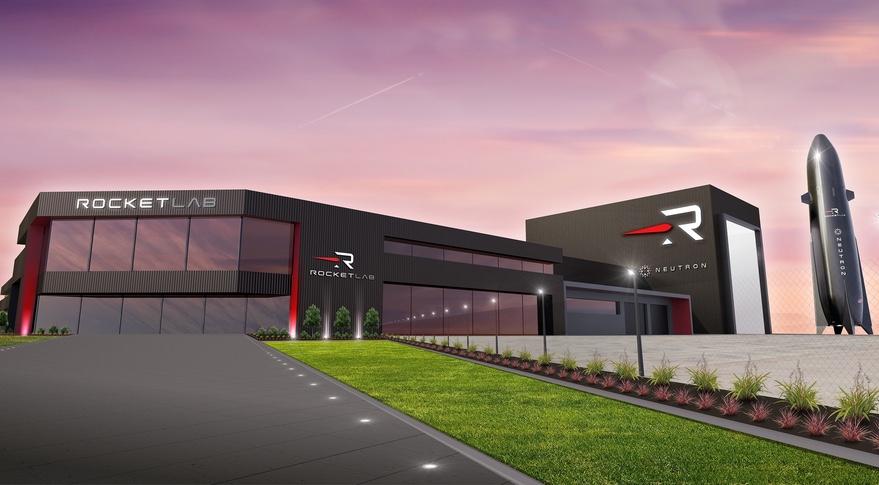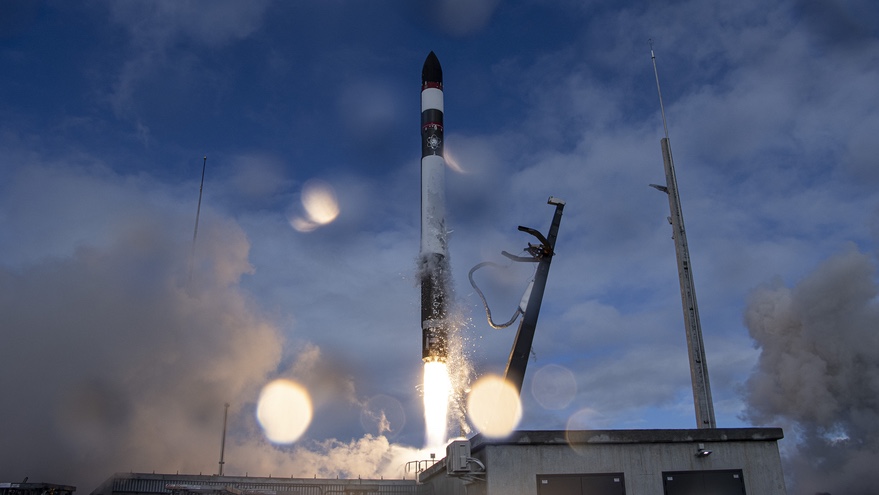WASHINGTON — Rocket Lab carried out its first Electron launch of the year Feb. 28, placing a Japanese radar imaging satellite into orbit at the same time the company released its financial results and selected Virginia for a rocket factory.
The Electron rocket lifted off at 3:37 p.m. Eastern from Pad B at the company’s Launch Complex 1 in New Zealand. The rocket deployed its payload, the StriX β satellite for Japanese company Synspective, nearly an hour later.
The satellite, placed into a 561-kilometer sun-synchronous orbit, is the second in a series of up to 30 satellites proposed by Synspective to collect synthetic aperture radar (SAR) imagery. Rocket Lab launched the company’s first satellite, StriX α, in December 2020, and this launch was the first in a three-launch contract signed in late 2021.
“With the successful insertion of our second SAR satellite, we will be able to improve our technology for operating multiple satellites and strengthen our data services,” Motoyuki Arai, chief executive of Synspective, said in a statement.
The launch was the first to use Pad B, a second pad Rocket Lab built at its New Zealand launch site. Having two pads, the company says, provides schedule flexibility as well as the ability to conduct consecutive launches quickly.
“With Pad B we’ve kept things efficient. Its systems and layout replicates Pad A and shares much of Pad A’s infrastructure,” said Shaun d’Mello, vice president of launch at Rocket Lab, in a statement about the new pad. That shared infrastructure includes a vehicle hangar and range control center. “With that we’ve been able to double our operational capacity, all on a concrete area smaller than the average tennis court.”
Financial results
While the launch was in progress, the company released its financial results for 2021. The company reported $62.2 million in revenue in 2021, an increase of 77% over 2020. The company, though, reported a net loss of $117.8 million, compared to a net loss of $55 million in 2020.
Executives emphasized a growing backlog of business that includes not just launch orders but also satellites and satellite components. That backlog grew from $82 million at the end of 2020 to $241 million at the end of 2021 and $545 million as of the earnings announcement.
“We’re very encouraged by the backlog growth,” said Adam Spice, chief financial officer of Rocket Lab, during a conference call with analysts. “People can talk about pipeline all day long, but it’s really all about backlog.”
Spice and Peter Beck, Rocket Lab’s chief executive, cited as one example the Feb. 24 contract to provide satellite buses to MDA for a new generation of Globalstar communications satellites, a deal valued at $143 million. “This contract reflects a deliberate and well-resourced strategy to grow Rocket Lab’s space systems business and deepen our value proposition beyond launch and into complete end-to-end space mission solutions,” Beck said.
Much of that growth in both revenue and backlog is driven by the company’s acquisition of three companies in the last quarter of 2021: software developer ASI, satellite separation systems developer Planetary Systems Corporation and solar panel and structures manufacturer SolAero.
In the earnings call, Spice declined to say how much of the company’s projected revenue of $42–47 million in the first quarter of 2022 came from those acquisitions versus existing lines of business. “They’re become a very diverse and intertwined set of businesses,” he said. The company did project $14 million in revenue from launch services from two Electron launches this quarter, one of which was the mission for Synspective.
Rocket Lab is considering additional acquisitions. “We continue to see interesting and compelling assets out there,” Spice said, adding that would not be at a slower pace than the three deals in the fourth quarter of last year. “I still expect to find opportunities that we can execute on.”

Neutron factory
The company announced in parallel with its earnings its decision to build a factory for producing its medium-class Neturon reusable launch vehicle in Accomack County, Virginia, next to the Wallops Flight Facility, which will host Neutron launches at the state-run Mid-Atlantic Regional Spaceport (MARS).
“The Commonwealth of Virginia came forward with a very attractive offer that we couldn’t turn down,” Beck said on the call. “Neutron is officially basing itself at Wallops Island, Virginia.”
That offer included $30 million in state funding, provided through the Virginia Commercial Space Flight Authority, or Virginia Space, for infrastructure and operational systems at the spaceport and up to $15 million from the state’s Major Employment and Investment Project Approval Commission for site improvements and construction of a building that will be owned by the state and leased to Rocket Lab.
Wallops had been the front-runner to host both Neutron launches and the vehicle factory since the company announced the vehicle a year ago. Rocket Lab said it wanted to locate the factory as close as possible to the launch site to minimize transportation.
“We were able to leverage our existing world-class assets and the significant investment the Commonwealth has made at MARS to enhance our capability, which was instrumental in convincing Rocket Lab to expand their operations and bring a new mission to Virginia,” Ted Mercer, chief executive and executive director of Virginia Space, said in a statement about the deal.
Rocket Lab previously built a pad for Electron launches, called Launch Complex 2, at MARS. The first Electron launch from there has been delayed by issues with NASA-supplied autonomous flight termination software, and Beck said in the earnings call that the company was now reviewing a version of that software the agency supplied earlier this year. “It’s giving us much more confidence to be able to schedule something to launch out of LC-2,” he said, but didn’t estimate when the launch would take place.
With the Neutron deal completed, he said construction of the factory will soon start. “We’ll be digging holes in the ground very, very shortly,” he said.
The first Neutron launch is scheduled for 2024. Beck, in response to an analyst’s question about speeding up its development to serve as a replacement for the Soyuz rocket should sanctions take it off the commercial market, said that was unlikely. “We’re working on Neutron as quickly as we can, so I’m not sure we can accelerate that much more than it already is,” he said.
